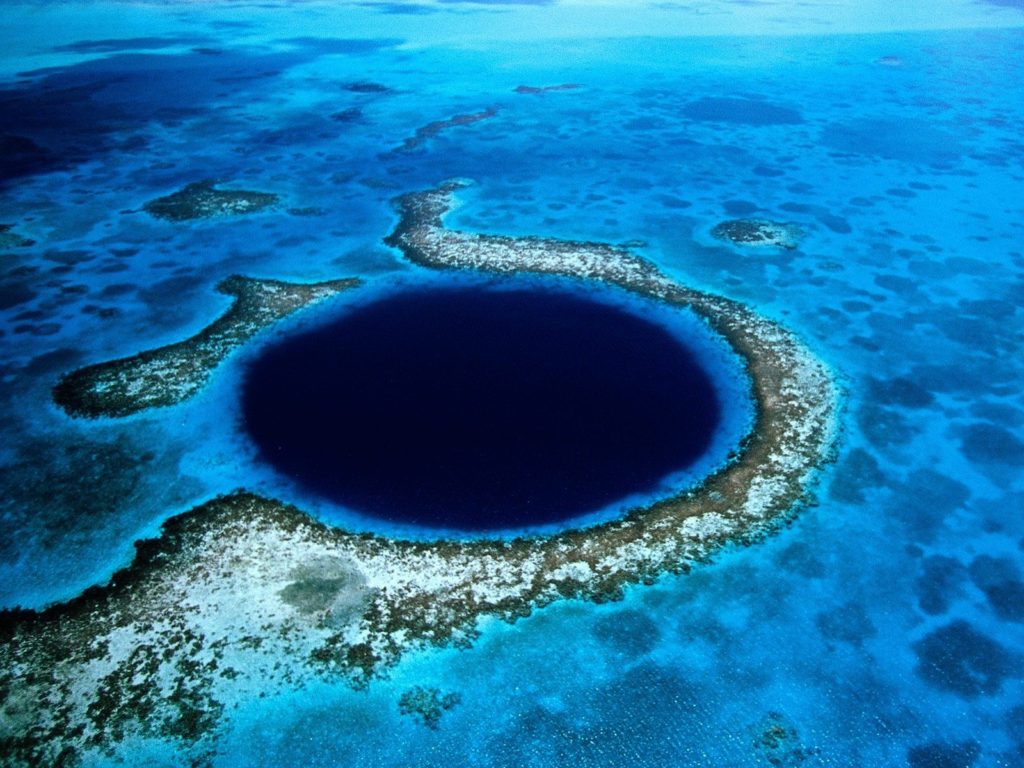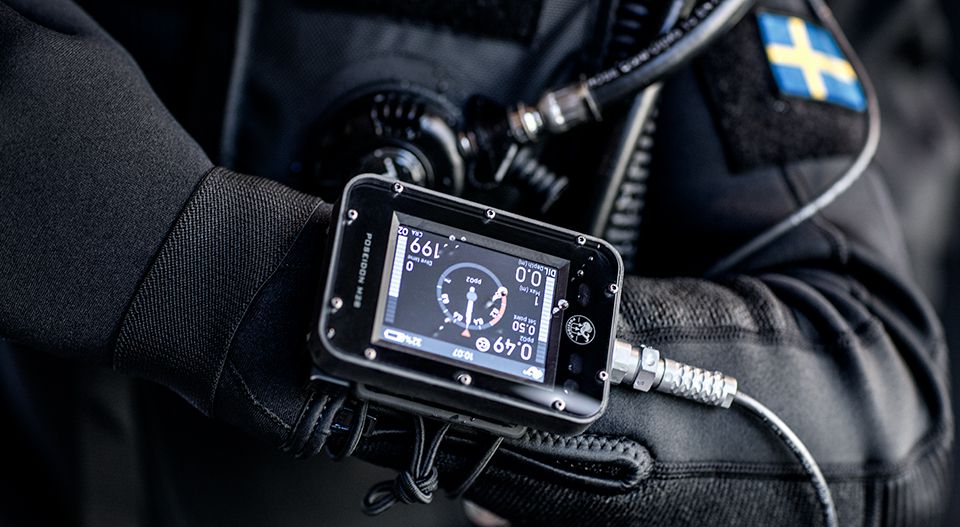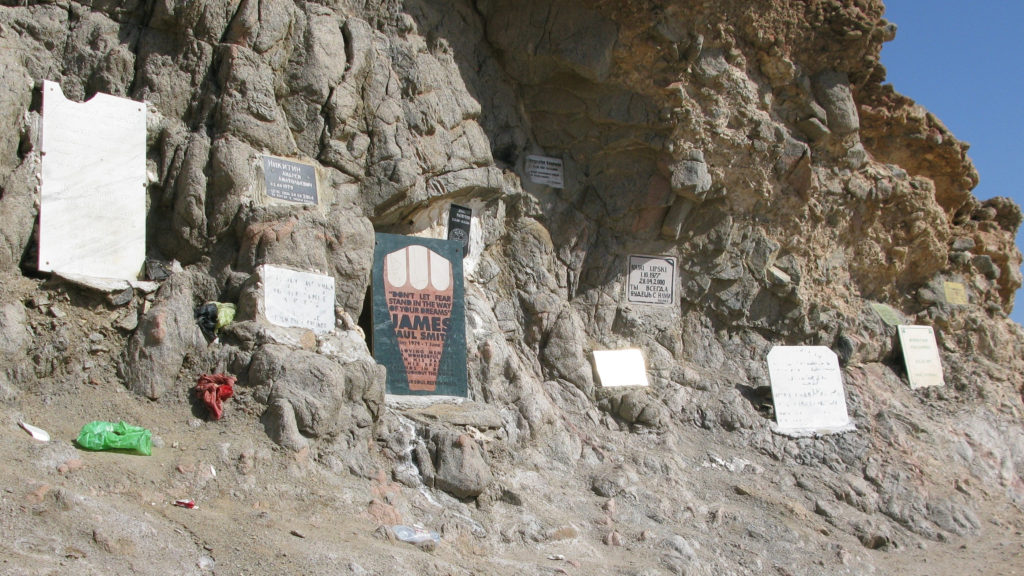
Hundreds if not thousands of recreational scuba divers descend each year into the crystal blue waters of the Red Sea in Egypt, tanks strapped on their backs, masks cinched in place, ready to marvel at the colorful underwater life and spectacular coral formations.
The professional divers, years of experience tucked under their weight belts, head to the Blue Hole located on the southwest coast of the red sea, searching for the dive of a lifetime.
The lure to dive here is the depth of 100m. The danger of diving here is the depth of 100m. The extreme danger of diving here is the drop-off on the seaward side that plunges down to 1,000m.
At 22 years old, Yuri Lipski from Russia was already an experienced and qualified technical scuba diver and, on 28 April 2000, was more than aware of the unique challenges of diving deep into the Blue Hole, and he was more than ready for the journey down to The Arch.
Lying at 56 meters (184 feet) below the surface, the Arch is a 26 meter (85-foot) horizontal tunnel that leads from the vertical shaft of the Blue Hole to the open sea. At that depth the water becomes murky, the visibility becomes reduced, and the strong down current makes just entering the passageway a physical challenge.
Yuri was acutely aware of the conditions awaiting him, all the pertinent information programmed into his diving computer to be viewed at a glance. With this crucial piece of equipment, he would know what depth he was descending to, the amount of air remaining in his tank throughout the entire time he was underwater, and even the amount of time the overall dive should take him.

Further pre-dive planning had forewarned him that the Arch could appear deceptively shorter than it actually was. Worse still, the incoming flow of water from the open sea had a tendency to lengthen the time it took to exit the passageway on the open seaward side. Compounding these challenges, was the odd descending angle of the tunnel itself.
This feature had taken many unsuspecting divers by surprise, causing them to underestimate the depth they were descending to, and the amount of air they were consuming. With a finite amount of air in the tank, a miscalculation could leave Yuri with barely enough air to make it back to the surface alive. Constant vigilance was important when diving so deep.
Still, Yuri had factored all this into his dive, had planned his route, dive depth, times. Everything. This was the standard operating procedure for such a challenging dive. What wasn’t standard was that he was doing the dive alone.
He wasn’t concerned, he was well prepared, all his equipment was in perfect working order and he was confident in his diving abilities.
Weights secured in place, his helmet camera primed to record this memorable dive, Yuri Lipski took a giant stride into the tapering shaft of the Blue Hole and began his descent.

What happened next was to make Lipski’s dive the most famous at the Blue Hole.
His camera recorded the entirety of the dive.
It showed an uncontrolled descent from the Arch all the way down to a depth of 115 meters. Lipski landed with an inaudible thud, shaking the recorded image.
The camera continued to record as he rips the mask from his face, as he rips his regulator out of his mouth, as the last gasp of air is ripped from his lungs.
The camera continues to record as he tries to inflate his buoyancy jacket, his disorientated mind vaguely comprehending that safety lies on the surface, 115 meters above.
The camera angle changes, going horizontal, continuing to record as his body convulses one last time and ceases to move, alone at the bottom of the ocean.
But what had caused Yuri Lipski to react as he had may never be known. Perhaps it was nitrogen narcosis or air toxicity from the air in his tank.
Whatever the cause, one of the world’s most renowned deep-water divers, Tarek Omar, was tasked to recover Yuri Lipski’s body the following day at the request of his mother.
Saddened at the young diver’s death, Tarek undertook the task solemnly. On completion of his recovery dive, he presented Yuri’s belongings to his heartbroken mother two days later, unfortunately, the still-functioning camera among them.
Believing that it would be inoperable as it wasn’t rated down to such extreme depths, he was saddened when it worked perfectly, revealing Yuri’s final moments so starkly to his distressed mother.
It was this video, released on Youtube, that immortalized Yuri’s dive, his shocking death recorded for the whole world to see. But it wasn’t the only life lost at the Blue Hole.
Tarek Omar, interviewed numerous times over the years, commented that he had lost count of how many bodies he had reclaimed from the seafloor of this popular dive site, easily over 100, maybe more. Each and every one of them experienced divers, each and every one of them underestimating the dangers lurking beneath the tranquil surface.
There were those, Omar had to admit sadly, that were just too deep for even him to recover. The only reminder that they had died here were their names inscribed on one of the many memorial plaques dotted around the site, a stark warning for the next Yuri Lipski wanting to dive deep into the big Blue Hole.

